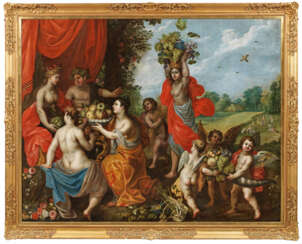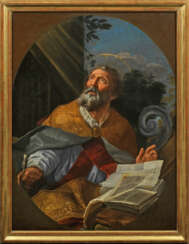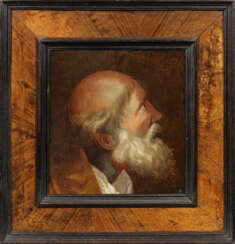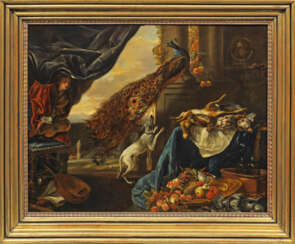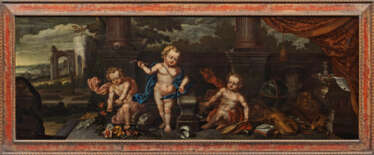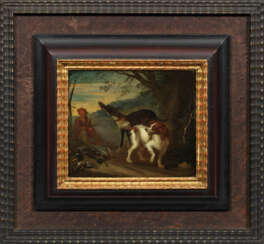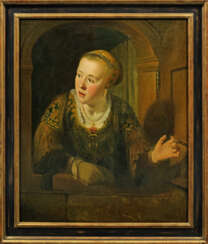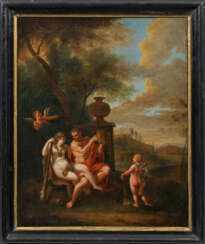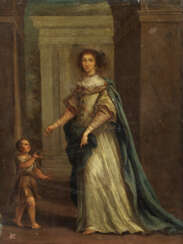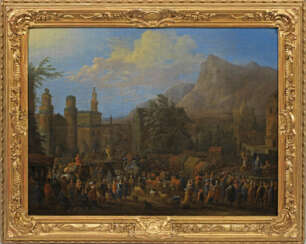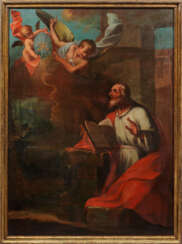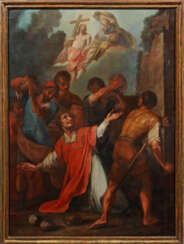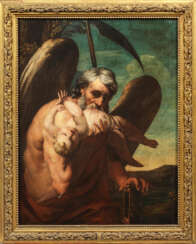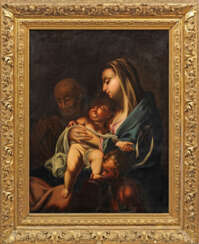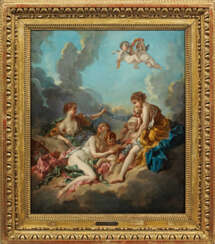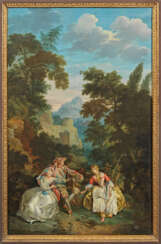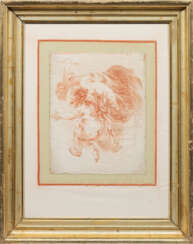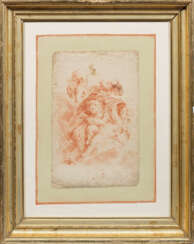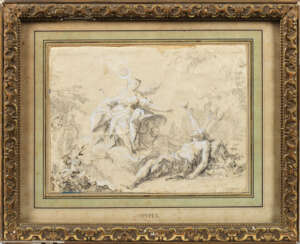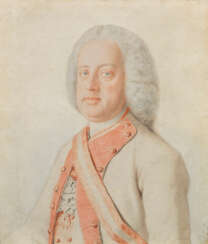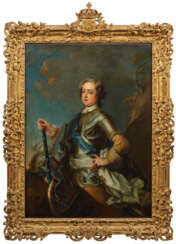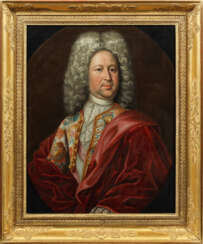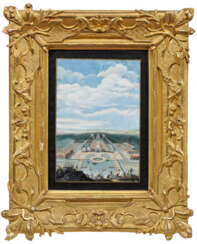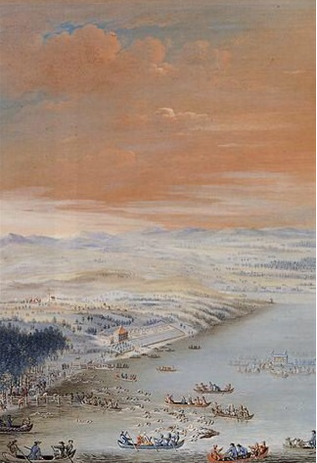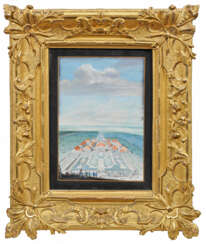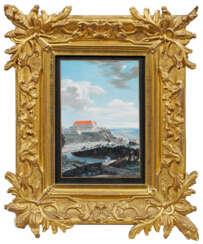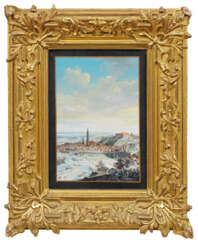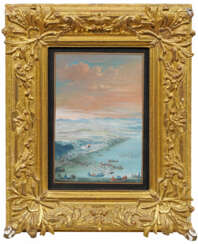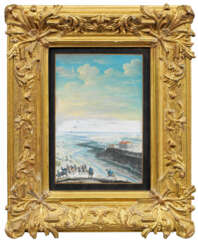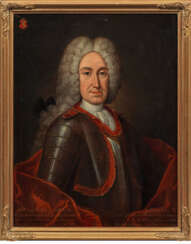
Paintings — 188. Internationale Kunstauktion - Teil II

Anthony van Dyck, a Flemish painter born in 1599 in Antwerp and passed away in 1641 in London, is celebrated as one of the foremost Baroque painters of the 17th century. His notable contributions to the art world include his exceptional portraits of European aristocracy, as well as his religious and mythological paintings. Van Dyck's early exposure to art was influenced significantly by his apprenticeship with Hendrik van Balen and later, by the profound impact of working alongside Peter Paul Rubens. His mastery was recognized early on, leading him to set up his own workshop by the age of 15.
Van Dyck's journey to Italy in 1621 marked a pivotal phase in his career, allowing him to immerse himself in studying the Italian masters and commencing his successful stint as a portraitist. His style evolved under the influence of Titian, evident from his vibrant use of color and refined modeling of form. Van Dyck's Italian period not only honed his artistic skills but also established his reputation as a painter of consequence.
Upon returning to Antwerp, van Dyck's portraits became highly sought after, leading to commissions from notable figures such as Archduchess Isabella and Queen Mother Maria de' Medici. His role as a court painter further solidified in England under the patronage of King Charles I, where he was knighted and appointed as the principal painter, profoundly shaping the aristocratic character of Charles I's reign through his portraits.
Van Dyck's legacy extends beyond his death, having influenced English portrait painting for over a century. His innovative techniques in watercolour and etching, along with his sophisticated portrayal of subjects, continue to be admired. His art not only showcases his technical prowess but also reflects the cultural and social nuances of his era, making his work a significant study for collectors and art historians alike.
For enthusiasts eager to explore the intersections of art, history, and culture through the lens of Anthony van Dyck's work, staying informed about new discoveries and auction events is essential. Signing up for updates can provide exclusive insights into the world of one of the most influential figures in Flemish art. This subscription ensures that collectors and experts are well-informed of any developments related to van Dyck's oeuvre, enhancing their understanding and appreciation of his contributions to the art world.
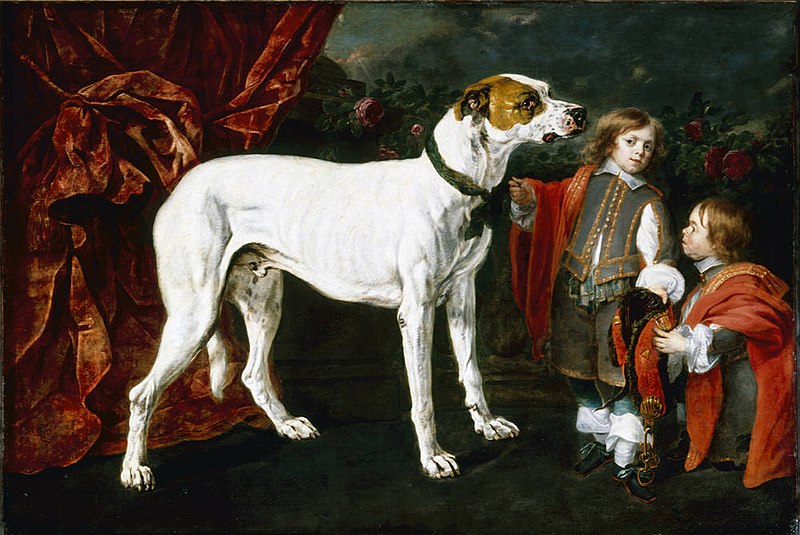
Jan Fyt (March 15, 1611 – September 11, 1661) was a prominent Flemish painter and engraver of the Baroque period, celebrated for his refined still lifes and animal depictions. Born in Antwerp to a wealthy merchant family, Fyt began his artistic training in 1621 under Hans van den Bergh. He later apprenticed with Frans Snyders, a leading master of still life and animal paintings, working in his workshop until 1631. In 1630, Fyt became a master of the Antwerp Guild of Saint Luke.
Between 1633 and 1640, Fyt traveled extensively across Europe, visiting cities such as Paris, Rome, and Venice. In Rome, he joined the Bentvueghels, a society of Northern European artists, where he was nicknamed "Goudvink" (Bullfinch). During his time in Venice, he received commissions from noble families like the Sagredo and Contarini.
Upon returning to Antwerp in 1641, Fyt established his own workshop, producing numerous works that catered to the tastes of aristocratic patrons. His paintings are distinguished by their vibrant palettes, dynamic compositions, and meticulous rendering of textures, particularly the fur and feathers of animals. Contemporaries highly valued his hunting still lifes, as well as his portrayals of flowers and fruits.
On March 22, 1654, Fyt married Françoise van de Sande, with whom he had four children. In 1650, he joined the Antwerp "Sodaliteit der Bejaerde Jongmans" (Sodality of Elder Bachelors), a fraternity that required members to have visited Rome. By 1652, he was elected dean of this guild.
Fyt's artistic legacy comprises approximately 280 paintings, many of which are signed and dated. His works are housed in major museums worldwide, including the Hermitage Museum in St. Petersburg, the Louvre in Paris, and the Kunsthistorisches Museum in Vienna. In addition to painting, Fyt was an accomplished engraver, creating etchings that featured animals and birds.
Jan Fyt passed away on September 11, 1661, in his native Antwerp, leaving an indelible mark on Flemish painting and influencing subsequent generations of artists.
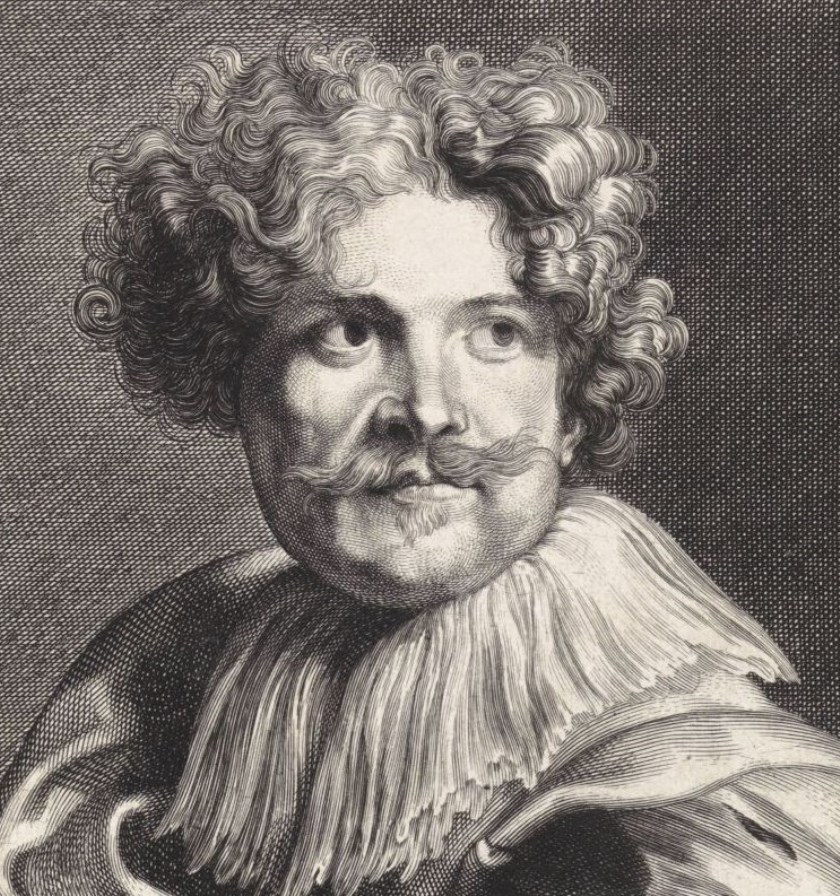
Simon de Vos was a Flemish painter, graphic artist and art collector, a member of the Guild of St. Luke in Antwerp.
Simon de Vos specialized early in his career in cabinet and genre painting in the style of the Utrecht Caravagistes. His depictions of merry company and scenes from fables are well known. From about 1640 he increasingly painted large-scale religious, allegorical and historical scenes in the style of Peter Paul Rubens and Antoni van Dyck. Among his pupils was Jan van Kessel the Elder (1626-1679).
Simon de Vos was financially successful: by the end of his life he owned four estates in Antwerp and a collection of 290 paintings.
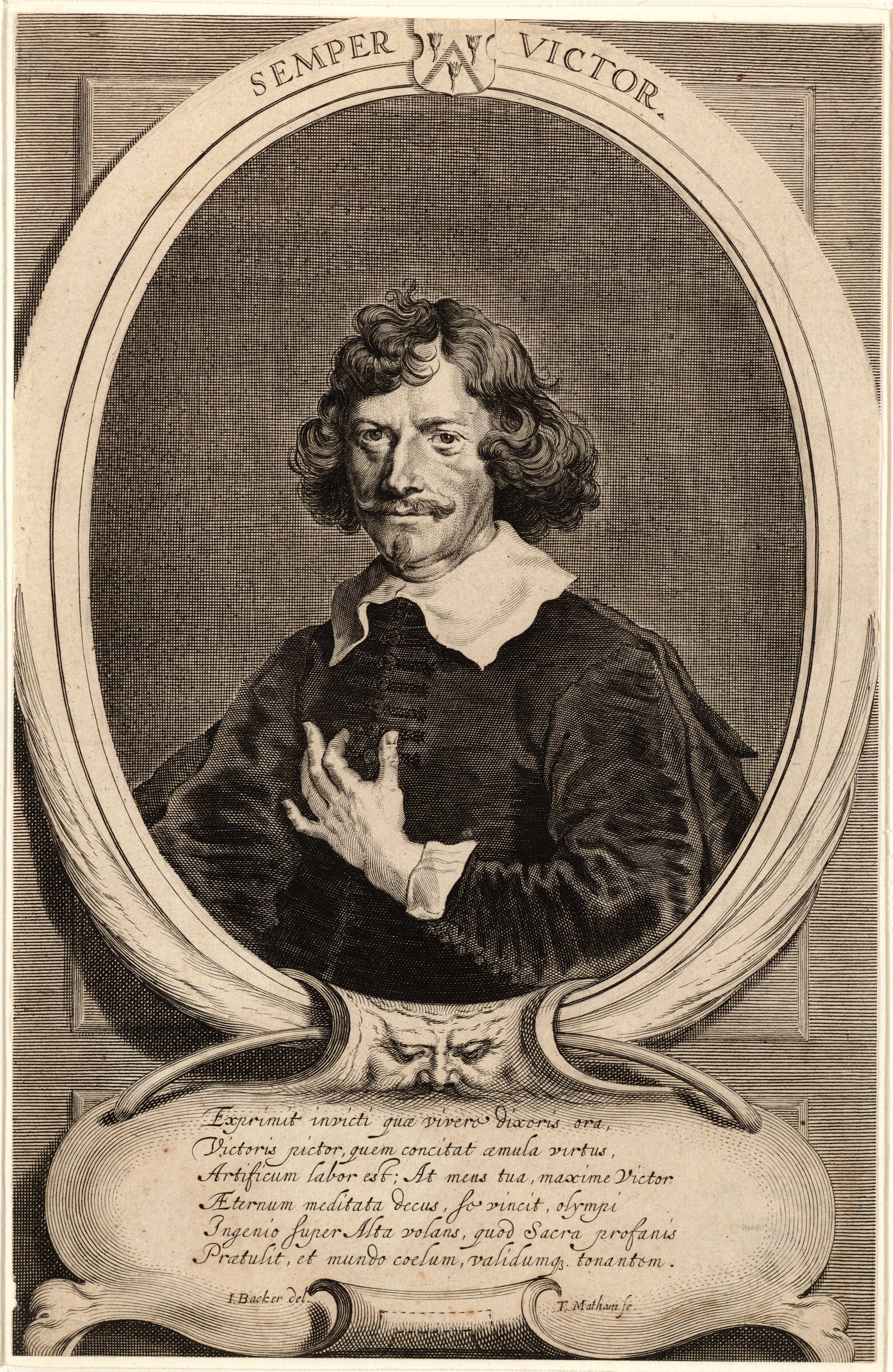
Jan Victors was a Dutch Golden Age painter mainly of history paintings of Biblical scenes, with some genre scenes. He may have been a pupil of Rembrandt. He probably died in the Dutch East Indies.
He was a conscientious member of the Calvinist Dutch Reformed Church, and for this reason he avoided creating art which depicts Christ, angels, or nudity.
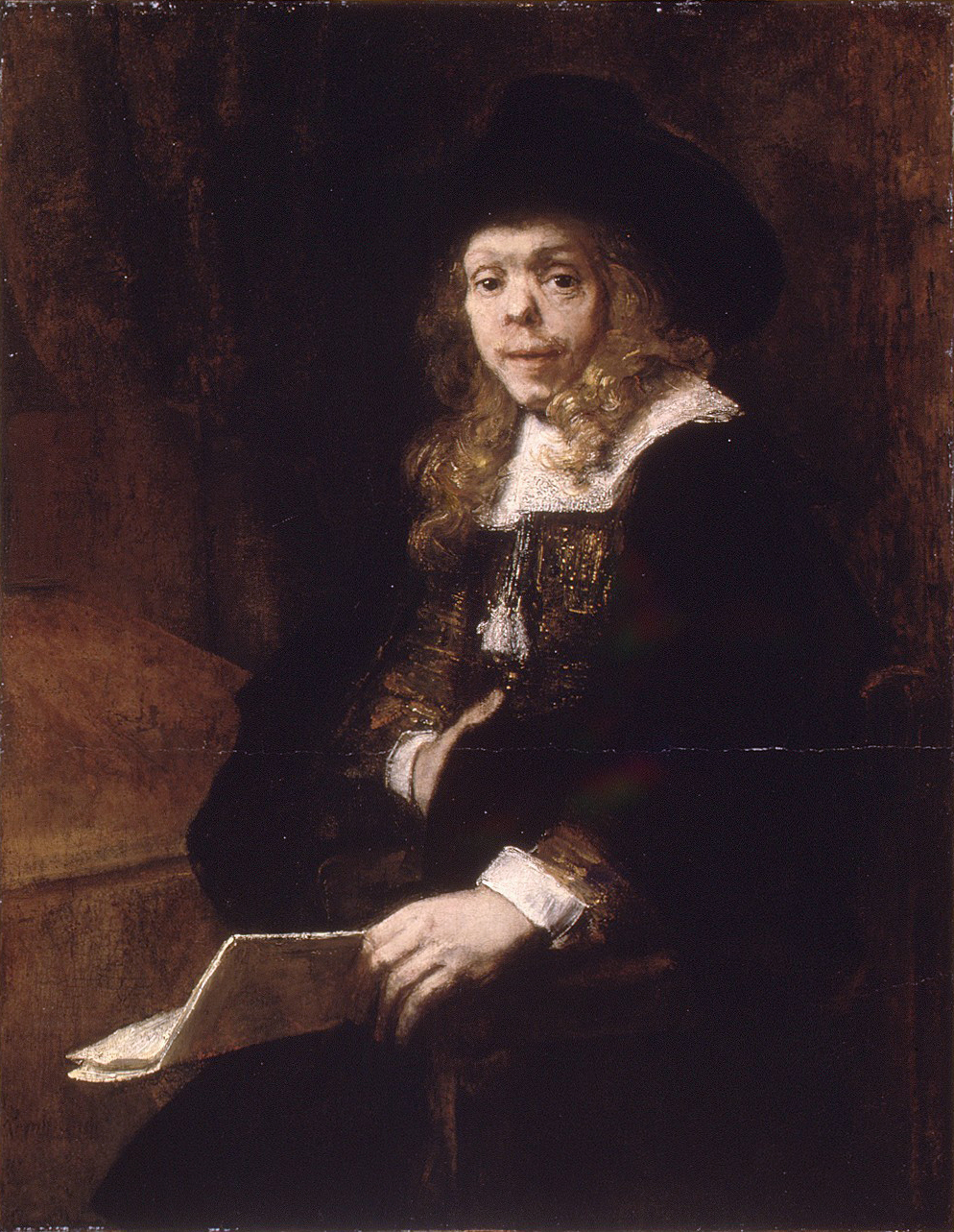
Gerard de Lairesse was a Dutch painter, printmaker, and art theorist. Known for his classical approach, de Lairesse's work marked a departure from the Baroque style prevalent in the Dutch Golden Age, leaning instead towards the neoclassicism that would dominate European art in the 18th century. His art and theories were deeply influenced by the ideals of beauty, grace, and moral edification, advocating for the selection of the most perfect manifestations of natural phenomena rather than their random imitation.
De Lairesse was not only a prolific painter but also an influential art theorist. His treatises, "Grondlegginge ter teekenkonst" (1701) and "Het groot schilderboeck" (1707), were seminal works that laid down principles of art and aesthetics that influenced not just his contemporaries but also generations of artists to come. He emphasized the importance of adhering to theoretical knowledge and the study of nature, albeit through a lens that filtered out its imperfections, to achieve ideal beauty in art.
Despite facing personal challenges, including a congenital condition that led to the loss of his sight in his later years, de Lairesse remained a central figure in the artistic and intellectual circles of Amsterdam. His lectures, delivered from his home, attracted a wide array of students and enthusiasts, eager to learn from his extensive knowledge and experience.
Today, works by Gerard de Lairesse can be found in prestigious institutions worldwide, including the Rijksmuseum and the Amsterdam Museum in the Netherlands, the Louvre in Paris, the Metropolitan Museum of Art in New York, and the National Gallery in London, among others. His legacy as the 'Dutch Poussin' speaks to his enduring influence on the evolution of European art, bridging the gap between the Baroque and the Neoclassical.
For collectors and experts in art and antiques, Gerard de Lairesse represents an intriguing study in the transition of art styles from the Baroque to Neoclassicism. His dedication to the theory and practice of art makes his work a valuable addition to any collection.
To stay informed about exhibitions, sales, and auction events related to Gerard de Lairesse's work, consider signing up for updates. This will ensure you are always up to date with the latest opportunities to engage with the remarkable legacy of this influential Dutch artist.
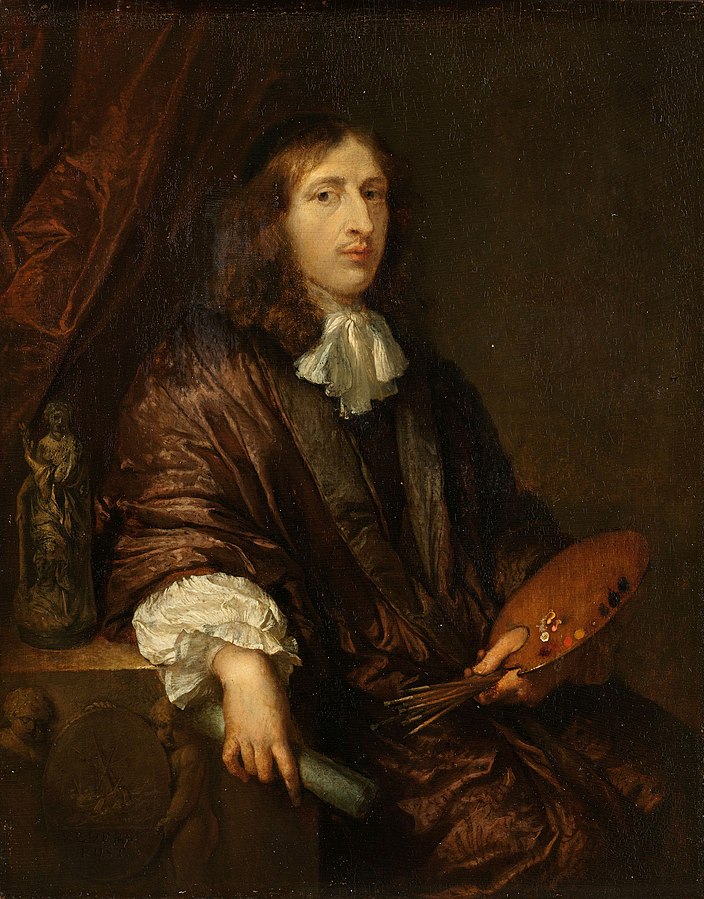
Caspar Netscher was a Dutch painter of the Golden Age of Dutch painting, known for his portraits. Netscher chose subjects from the life of the Dutch elegant and wealthy class; he painted many small portraits - mostly of women; some of them historical. After spending some time in Paris, he painted several persons belonging to the court of Louis XIV. In addition to the above-mentioned usual subjects, he depicted sometimes historical and biblical scenes.
Caspar Netscher's paintings were kept in many art galleries: in the Louvre, Amsterdam, Florence, in several private collections in England and in many other places. In the Hermitage at the beginning of the 20th century there were six of his paintings, including a portrait of the artist himself and a portrait of Mary Stuart, painted in 1683; today only two works have survived.
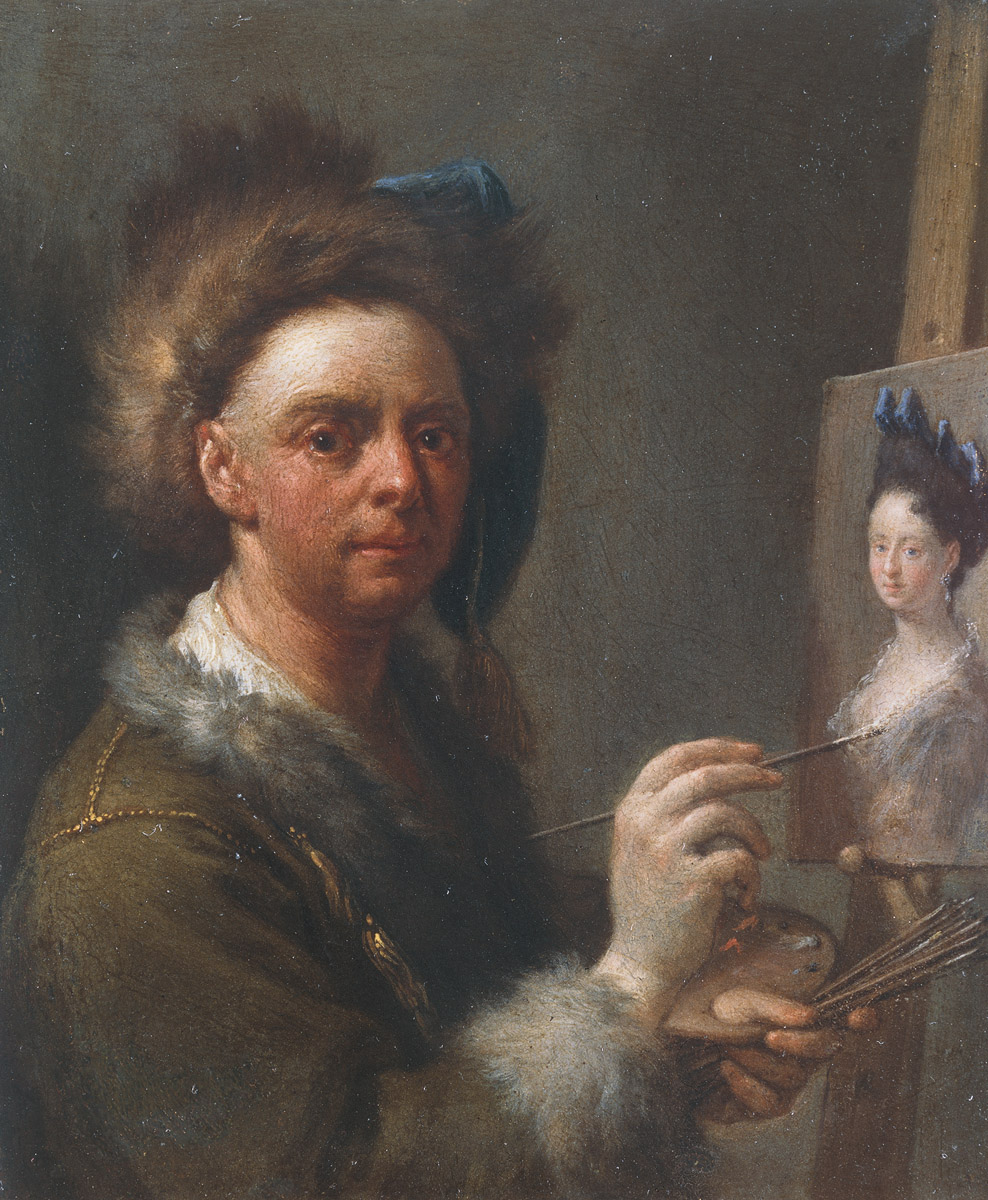
Francesco Trevisani was an Italian painter, celebrated for his contributions to the early Rococo or late Baroque periods. Born in Capodistria, he moved to Venice for training and later settled in Rome, where he gained prominence after the death of Carlo Maratta, becoming a leading figure in Roman art circles. Trevisani's art is known for its vibrant color palette and emotional depth, aligning with Maratta's style but with a distinct sweetness and colorfulness.
Francesco Trevisani's body of work includes frescoes, altarpieces, devotional and mythological scenes, and portraits. Notable works include "The Agony in the Garden" and "The Baptism of Christ," housed in Glasgow Museums and Leeds Museums and Galleries, respectively. His painting "Dead Christ Supported by Angels" reflects his ability to evoke deep religious sentiment, showcasing his skill in capturing the divine intertwined with human emotion.
Francesco Trevisani's influence extended across Europe, with his works being a testament to the religious and cultural narratives of his time. His ability to blend dramatic expression with delicate detailing won him accolades and recognition, making his works sought after by collectors and art enthusiasts alike.
For those interested in the fusion of religious narrative and artistic expression, Francesco Trevisani's works offer a compelling study. His legacy continues to inspire and attract admiration, making him a significant figure in the history of Italian art.
To stay updated on sales and auction events related to Francesco Trevisani, sign up for our newsletter. This subscription is your gateway to the latest updates on available pieces and upcoming events, ensuring you stay informed about opportunities to acquire works by this renowned artist.
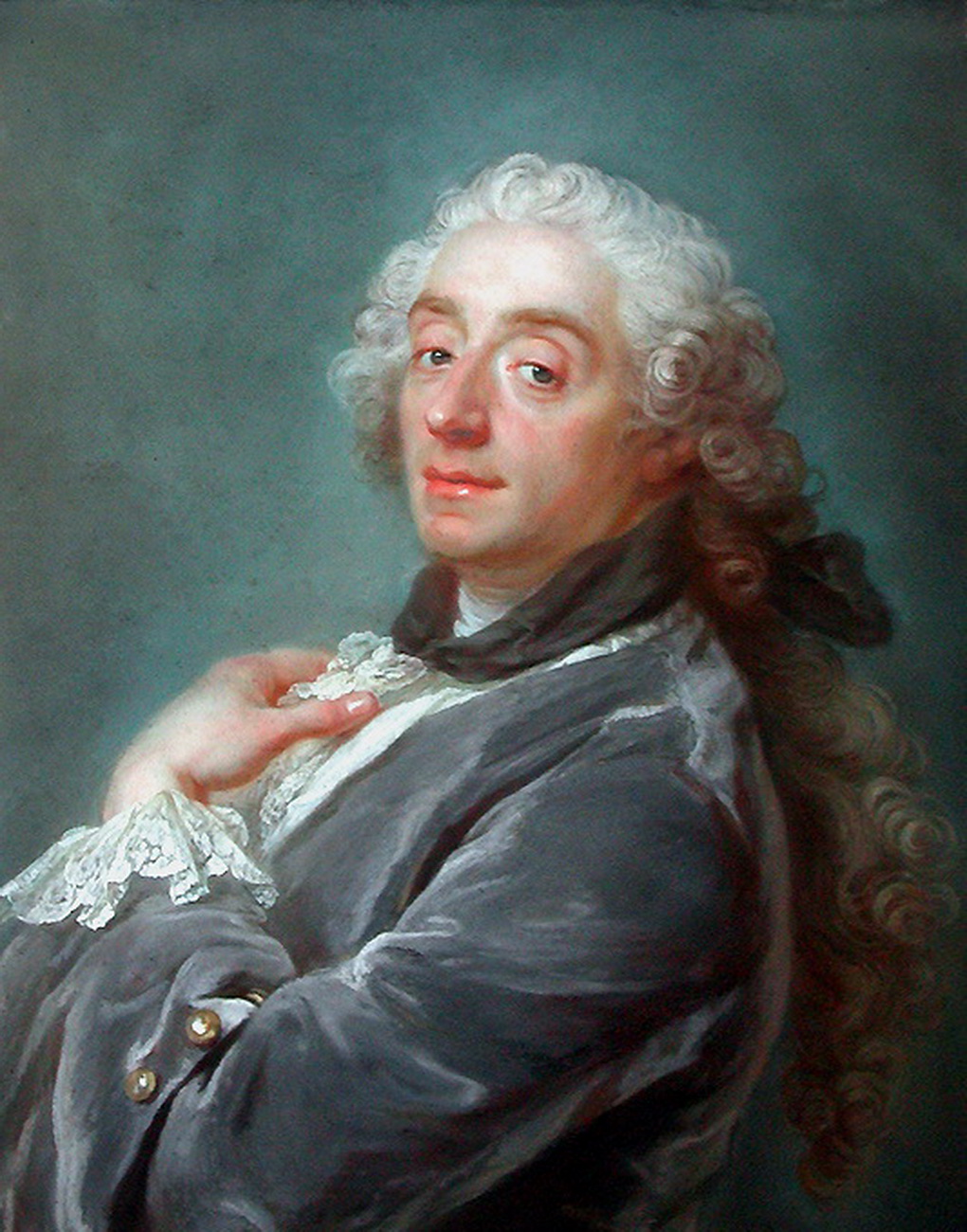
François Boucher, a French artist, is celebrated for his significant contributions to the Rococo style of painting. His works are renowned for their idyllic and voluptuous themes, which include classical subjects, decorative allegories, and pastoral scenes. Boucher's talent in creating intricate and charming paintings made him a favorite in the French court, especially with Madame de Pompadour.
François Boucher's skills were not confined to painting alone; he was also an adept draftsman and tapestry designer. His designs for the Beauvais tapestry workshops were highly successful, influencing decorative arts across Europe. Moreover, Boucher's influence extended to porcelain, with his designs being replicated on tableware and decorative pieces at the Vincennes and Sèvres factories.
Despite the later criticism of his style as overly frivolous and disconnected from the emerging Neoclassical trends, François Boucher's works continue to be admired for their aesthetic beauty and historical significance. His ability to blend various elements into a cohesive and appealing visual narrative demonstrates his mastery and enduring legacy in the art world.
For art collectors and enthusiasts, François Boucher's oeuvre offers a fascinating glimpse into 18th-century French art and culture, reflecting the opulence and delicate tastes of the Rococo period. His paintings and designs continue to be celebrated and studied for their artistic merit and historical context.
To stay updated on the latest exhibitions, sales, and events related to François Boucher's works, consider subscribing to updates from reliable art and antique sources. This way, you'll remain informed about opportunities to engage with the art of one of Rococo's most distinguished masters.
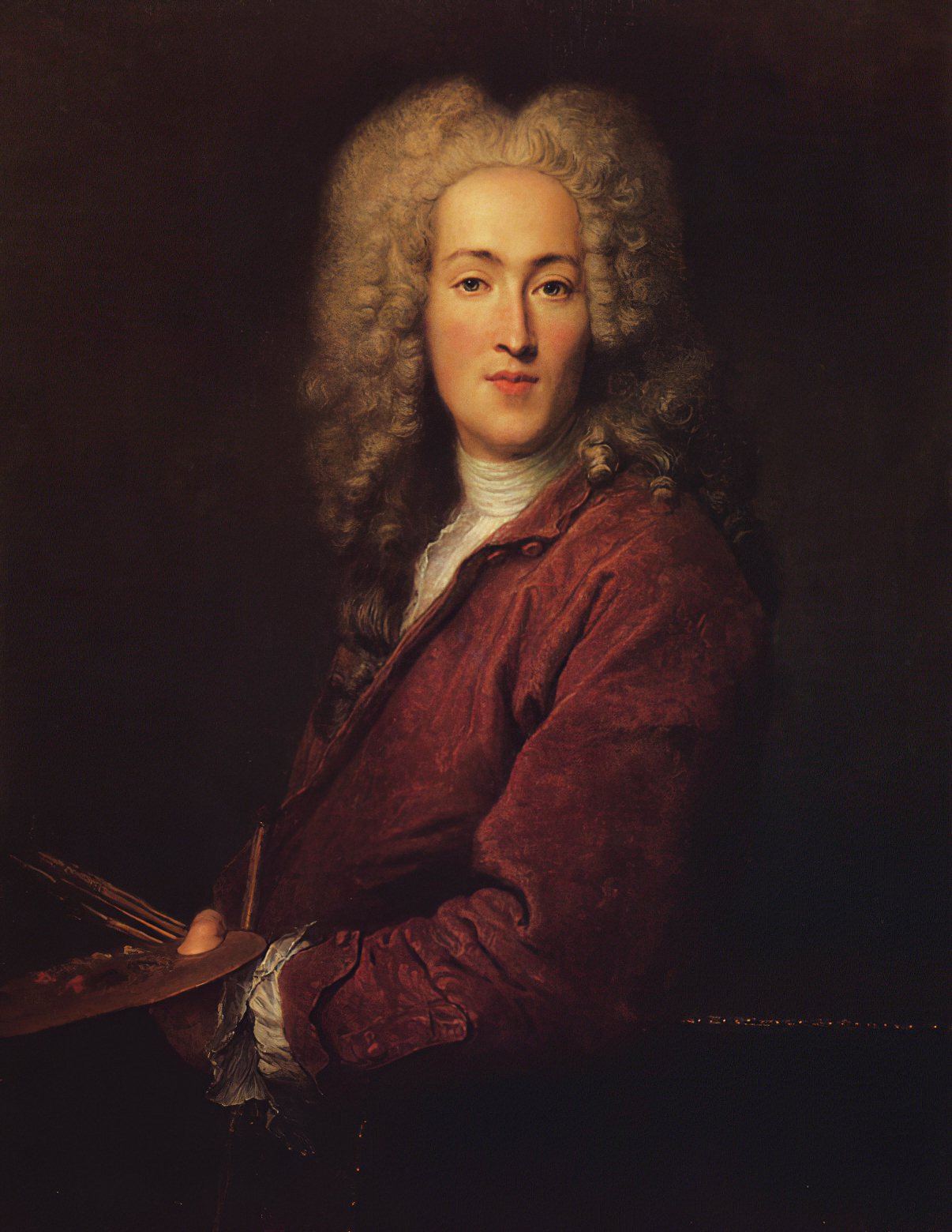
Nicolas Lancret was a French painter. Born in Paris, he was a brilliant depicter of light comedy which reflected the tastes and manners of French society during the regency of the Duke of Orleans and, later, early reign of King Louis XV.

François Boucher, a French artist, is celebrated for his significant contributions to the Rococo style of painting. His works are renowned for their idyllic and voluptuous themes, which include classical subjects, decorative allegories, and pastoral scenes. Boucher's talent in creating intricate and charming paintings made him a favorite in the French court, especially with Madame de Pompadour.
François Boucher's skills were not confined to painting alone; he was also an adept draftsman and tapestry designer. His designs for the Beauvais tapestry workshops were highly successful, influencing decorative arts across Europe. Moreover, Boucher's influence extended to porcelain, with his designs being replicated on tableware and decorative pieces at the Vincennes and Sèvres factories.
Despite the later criticism of his style as overly frivolous and disconnected from the emerging Neoclassical trends, François Boucher's works continue to be admired for their aesthetic beauty and historical significance. His ability to blend various elements into a cohesive and appealing visual narrative demonstrates his mastery and enduring legacy in the art world.
For art collectors and enthusiasts, François Boucher's oeuvre offers a fascinating glimpse into 18th-century French art and culture, reflecting the opulence and delicate tastes of the Rococo period. His paintings and designs continue to be celebrated and studied for their artistic merit and historical context.
To stay updated on the latest exhibitions, sales, and events related to François Boucher's works, consider subscribing to updates from reliable art and antique sources. This way, you'll remain informed about opportunities to engage with the art of one of Rococo's most distinguished masters.

François Boucher, a French artist, is celebrated for his significant contributions to the Rococo style of painting. His works are renowned for their idyllic and voluptuous themes, which include classical subjects, decorative allegories, and pastoral scenes. Boucher's talent in creating intricate and charming paintings made him a favorite in the French court, especially with Madame de Pompadour.
François Boucher's skills were not confined to painting alone; he was also an adept draftsman and tapestry designer. His designs for the Beauvais tapestry workshops were highly successful, influencing decorative arts across Europe. Moreover, Boucher's influence extended to porcelain, with his designs being replicated on tableware and decorative pieces at the Vincennes and Sèvres factories.
Despite the later criticism of his style as overly frivolous and disconnected from the emerging Neoclassical trends, François Boucher's works continue to be admired for their aesthetic beauty and historical significance. His ability to blend various elements into a cohesive and appealing visual narrative demonstrates his mastery and enduring legacy in the art world.
For art collectors and enthusiasts, François Boucher's oeuvre offers a fascinating glimpse into 18th-century French art and culture, reflecting the opulence and delicate tastes of the Rococo period. His paintings and designs continue to be celebrated and studied for their artistic merit and historical context.
To stay updated on the latest exhibitions, sales, and events related to François Boucher's works, consider subscribing to updates from reliable art and antique sources. This way, you'll remain informed about opportunities to engage with the art of one of Rococo's most distinguished masters.
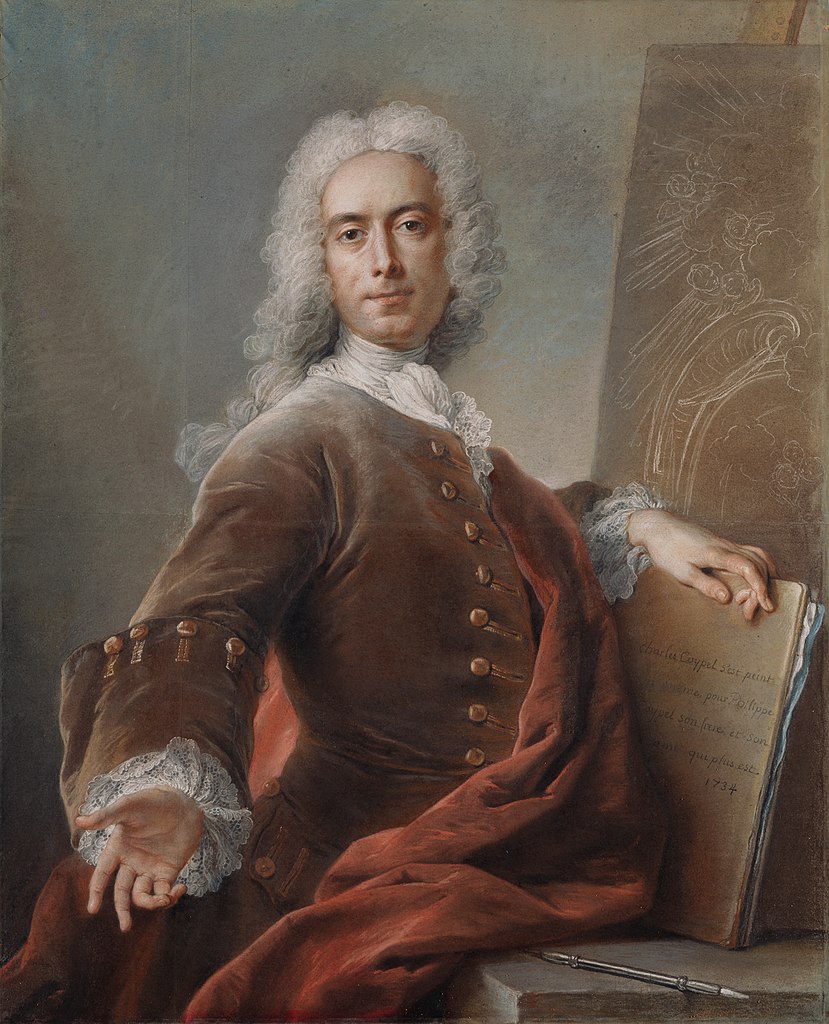
Charles-Antoine Coypel was a multifaceted French Rococo artist, known for his contributions as a painter, designer, playwright, and art critic. Born into a family with a significant artistic legacy, Coypel rose to prominence in the French court, eventually serving as the court painter and the director of the Académie Royale. His work, which often blended dramatic narrative with intricate detail, played a pivotal role in the development of Rococo art in France, reflecting the opulent and expressive tendencies of the period.
Coypel's artistic output includes a range of subjects, from religious themes, as seen in his etching "The Virgin and Child," to theatrical history paintings that convey operatic passions and high drama. His ability to infuse his compositions with emotional depth and narrative complexity, alongside his mastery of the Rococo style's playful and ornamental characteristics, distinguishes his work within the era. Notably, Coypel was also involved in the design of tapestries for the Gobelins Manufactory, illustrating scenes from Miguel de Cervantes's "Don Quixote," which remained influential through the end of the 18th century.
His artworks, such as "The Virgin and Child," showcase not only his technical skill but also his sensitivity to composition and form, contributing to his reputation as one of the leading painters in the French court during the 18th century. Coypel's legacy is preserved in his paintings, etchings, and tapestry designs, which continue to be celebrated for their artistic and historical significance.
For collectors and experts in art and antiques, Charles-Antoine Coypel's work represents an essential connection to the Rococo period's rich cultural and aesthetic traditions. His contributions to French art history, particularly through his role at the Académie Royale and his influence on the development of Rococo style, make his work a valuable study for those interested in the dynamics of French art and culture during the 18th century.
To stay informed about updates related to Charles-Antoine Coypel, including new discoveries, sales, and auction events of his works, consider signing up for updates. This service will provide tailored notifications to enthusiasts and collectors eager to explore and acquire pieces by Coypel, ensuring they remain at the forefront of developments in the field of Rococo art.
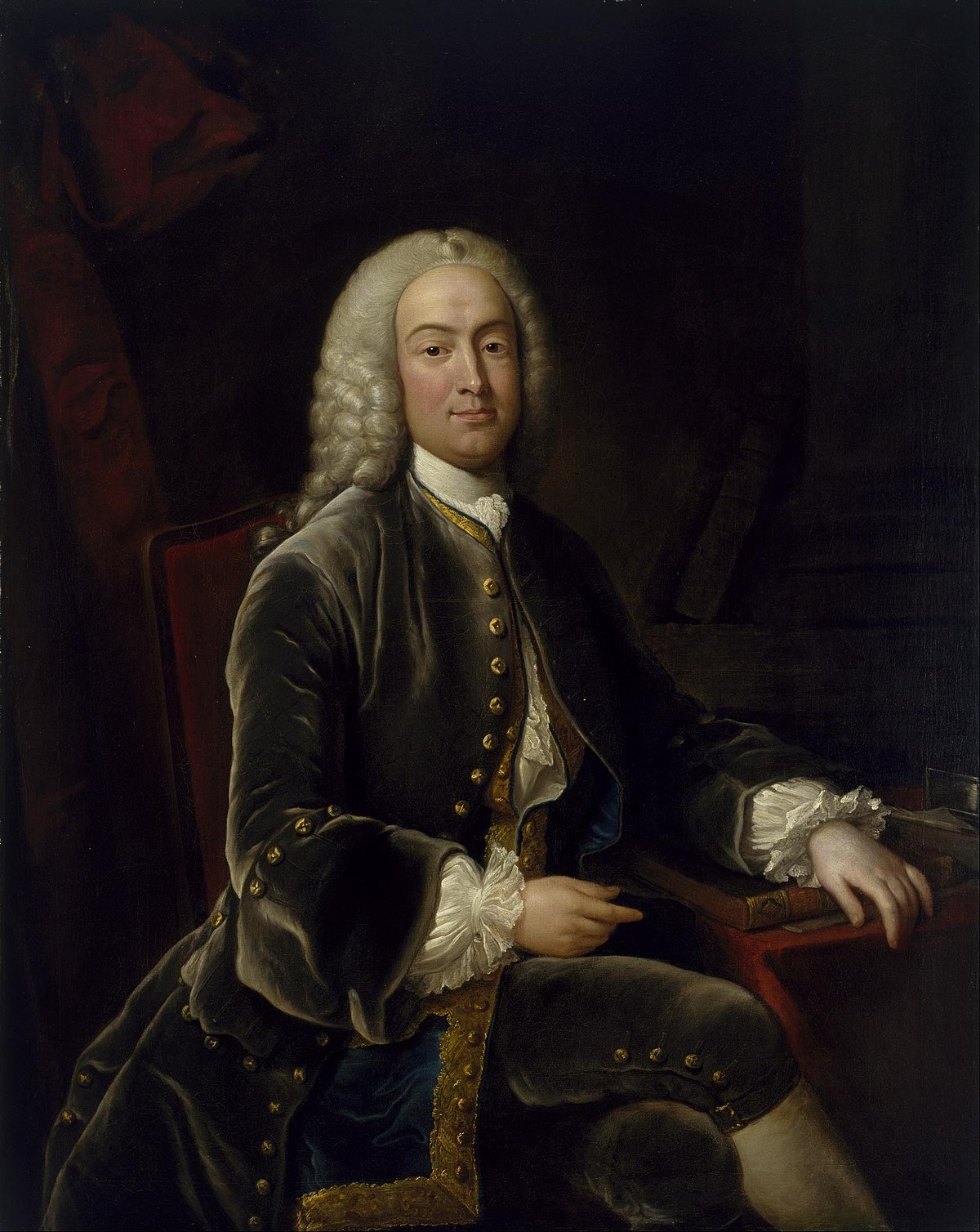
Jean-Baptiste van Loo was a French portrait painter of the Rococo period. He came from a large Van Loo family of painters, originally from Flanders. Elder brother of the painter Charles André van Loo. He studied painting with Benedetto Luti at the Académie Française in the Villa Médici.
Jean-Baptiste van Loo's style was marked by refined elegance and a desire to convey the likeness and character of his subjects. He excelled in portraiture and his work was sought after by royalty, aristocrats and prominent figures of his time.
In addition to portraits, he also painted historical and mythological scenes. His works had a sense of grandeur, using a vivid colour palette, intricate details and dynamic compositions.
